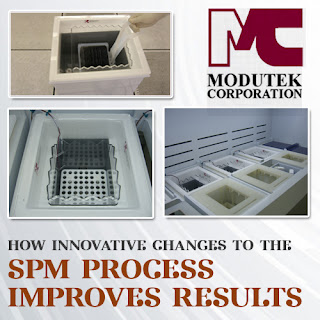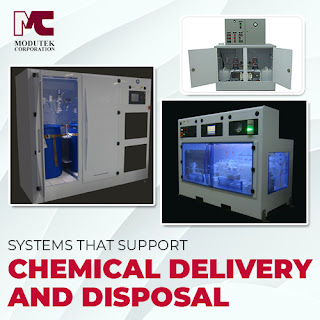The SPM process is a popular wafer cleaning process that involves using a mixture of sulfuric acid and hydrogen peroxide. It quickly removes significant amounts of organic material from the surface of silicon wafers. It is ideal for stripping photoresist and hydroxylates surfaces, making them hydrophilic in preparation for the next process steps.
The SPM process uses a mixture of sulfuric acid and hydrogen peroxide and quickly removes organic material from silicon wafers. However, it is also highly corrosive and unstable. The hydrogen peroxide decays to form water, which reduces the concentration of the mixture and slows down the cleaning process.
In order to keep the process going additional hydrogen peroxide is spiked into the mixture gradually, which brings the concentration back up. As a result, the cleaning process takes place more quickly at higher temperatures, but the hydrogen peroxide decays quickly as well, affecting control accuracy. Spiking the mixture repeatedly will limit its useful life to about one day, so it needs daily replacement. Doing this, however, proves to be quite expensive, resulting in delays for the processing line.
To address this problem, Modutek has developed an innovative strategy, called “Bleed and Feed.” This helps to prolong the useful life of the SPM mixture while controlling mixture temperature and concentration precisely.
In this process, Modutek uses a two-tank system with a “clean” tank and a “dirty” tank. Small programmable amounts are regularly drained from the dirty tank and replaced with mixture from the clean tank. To restore the mixture in both tanks, sulfuric acid is added to the clean tank to replace the amount drained and small amounts of hydrogen peroxide are added to both tanks to maintain the required concentration. This semi-continuous process maintains the concentration of the mixture within narrow limits without spiking and without the increase in temperature that's caused by spiking.
With Modutek's “Bleed and Feed” method, chemical use and disposal is reduced substantially. The wafer cleaning process becomes precise and predictable, encouraging better repeatability and consistent cleaning times that result in better performance. The useful life of the mixture is also extended from one day to a week, so the frequency and cost of replacing it are significantly reduced. The equipment stays running for a longer time since it doesn't have to be shut down as often for changing mixture. Thus, downtime is lower and throughput increases.
Modutek, a leading semiconductor equipment manufacturer, works closely with their customers to develop ways to improve manufacturing process results. Learn more about them by reading the complete article, How Innovative Changes to the SPM Process Improves Results. If you have questions, or would like to discuss your specific need, contact Modutek by email Modutek@modutek.com or call 866-803-1533.


